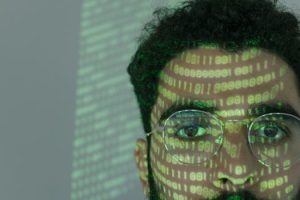Generative AI Lesson Plans: Reducing Teacher Burnout in 2025
In 2025, many educators are facing a significant challenge: teacher burnout. With administrative responsibilities, increasing class sizes, and demanding curriculum standards, teachers are feeling overwhelmed and exhausted. However, a new solution has emerged that has the potential to transform the education landscape and address the issue of teacher burnout: generative AI lesson plans. This cutting-edge technology has the power to reduce the workload of teachers, freeing up their time to focus on what truly matters – their students. In this article, we will explore the concept of generative AI lesson plans and its potential to mitigate teacher burnout in the year 2025 and beyond.
The Rise of Generative AI Lesson Plans
Traditionally, lesson planning has been a labor-intensive and time-consuming task for teachers. Hours of research, drafting, and formatting go into creating a single lesson plan. Not to mention, teachers must tailor their lessons to meet the individual needs and learning styles of their students.
However, with the advancements in technology, generative AI lesson plans are changing the game. This innovative approach uses artificial intelligence algorithms to automatically generate personalized lesson plans based on students’ learning styles, abilities, and needs. These lesson plans can then be easily customized by teachers, ensuring a perfect fit for their classroom.
Streamlining the Planning Process
One of the most significant benefits of generative AI lesson plans is its ability to streamline the planning process. Artificial intelligence technology can collect and analyze vast amounts of data, such as student assessment results, learning styles, and curriculum standards, in a matter of seconds.
This means that teachers no longer have to spend hours researching and creating lesson plans from scratch. Instead, they can use the generated plans as a starting point, making small adjustments to suit their students’ needs. This efficient approach can save teachers a significant amount of time, reducing their workload and reducing the risk of burnout.
Personalized Learning Experiences
One of the biggest challenges for teachers is meeting the diverse needs of their students. With generative AI lesson plans, educators can create personalized learning experiences that cater to each student’s individual strengths and weaknesses.
The AI algorithms can identify gaps in student knowledge and provide targeted lesson content to address those gaps. This not only saves teachers time but also ensures that students are receiving the right support and instruction to succeed.
The Impact on Teacher Burnout
The use of generative AI lesson plans can significantly reduce the workload on teachers, thus lowering the risk of burnout. By automating the planning process and providing personalized lesson content, educators can focus their time and energy on providing quality instruction and support to their students.
Moreover, with less time spent on administrative tasks, teachers can have a better work-life balance, reducing stress and improving overall job satisfaction. This, in turn, can have a positive impact on the quality of education, benefiting both students and teachers.
The Future of Education
As we move towards the year 2025, it is clear that technology will continue to play a significant role in shaping the education landscape. The use of generative AI lesson plans has the potential to transform the way teachers plan and deliver instruction, ultimately improving the learning experience for students.
While the idea of AI-generated lesson plans may seem daunting to some, it is important to remember that technology is not meant to replace teachers. Instead, it is a tool that can support and enhance their teaching practices.
In Conclusion
In 2025, with the aid of generative AI lesson plans, teachers could see a significant reduction in their workload and a decrease in the rate of burnout. This revolutionary technology has the power to personalize learning, save time, and improve overall job satisfaction in the education sector. As educators continue to embrace the use of technology in the classroom, we can look forward to a brighter future for both teachers and students alike.








